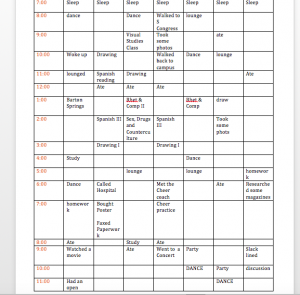Hara seems to be driven by design and its entirety in this reading. The author goes over the history of design and speaks about its evolution from primitive objects, the vessel and the stick, to a network of more advanced weapons and useful tools. I however chuckled when the writer made the instant connection to anthropoids and spaceships, but I do suppose that when one looks that the spectrum of design, man has hiked a pretty far journey very quickly to be able to accomplish what he has accomplished.
As a beginning graphic design major, my mind to tend leap towards pure aesthetics, and I don’t really think about practicality when I hear the word ‘design’, but Hara disagrees and vindicates the practically of design and its usefulness and necessity. The simple stick and vessel lead to great designs: the hoe, the cup, the sword, and then eventually cranes, tanks, and missiles (Hara 413).
This piece also goes into the inspiration of design and the meanings behind elements of design and how we feel about them. Hara seems to introduce that design is inspired by what we conceive from our own imagination; things that will be or can be (the future). Hara also explores that design is made up of familiar elements, which things that we have seen before (the past). Future thinking and conception births innovation while nostalgia and familiar elements inspire relationship among the audience is allows them to relate to the design.
However Hara makes the impression that elements of design do not have the same effect on countries across the board. The West, especially England, had a stronghold on the world influence and thus influenced design across many different cultures. I always found this both interesting and distressing. I see England’s influence infused with many cultures. Women’s ‘Auana, a modern style of Hawaiian hula, is decorated with elegant, “ladylike” motions, western style music, and dresses with strong Victorian influence. I find this very interesting to see a mashup of culture but also am heartbroken about how much the Hawaiian people had to compromise. It shows that a huge part of a culture is how and what it designs.
Hara also argues that machines jeopardize with the integrity of genuine craftsmanship, but I disagree. Mass production does make things cheaper and easy to access which makes our society more sustainable and productive. Design is a reflection of society and ‘here and now’ is of popular demand. People have easy access to the things they worked for, but I do think that designers do have a place and can produce for a more genuine product. When the designer does the work himself.





